In the evening of September 16, 2010, a large storm front swept through the general NYC area with high winds and heavy rain and the storm was strong enough to produce two tornadoes, one of which struck mid-Brooklyn, the other mid-Queens including Forest Hills and Flushing, leaving toppled trees in its wake.
The storm also left structural damage to countless homes and a falling tree killed a Queens woman who had just replaced her husband behind the wheel of a car stopped on Grand Central Parkway. The storm came and went quickly in about twenty minutes, but it will be remembered for much longer than that. It claimed an iconic casualty in the 45-foot tall wooden spire of St. George Church on Main Street and 37th Avenue in Flushing, a town and neighborhood centerpiece for 157 years.
Let Us Turn Back The Clock to the Flushing of over a century and a half ago. Dragging that H.G. Wells Time Machine, a Victorian-era contraption with bars, fans, levers, and exhaust pipes around (Wells never thought to put wheels on the bottom) was tough work, I’ll tell ya. But it always pays off when you see the sights of days gone by…
In 1870, Flushing, which was then already over 200 years old, was still a one-horse town and there’s nary a horse to be seen, although you can make out wagon wheel tracks in the dirt road. We’re at what is now the intersection of Main Street and Roosevelt Avenue — now one of the most insanely crowded crossroads in a city full of them.
The only constant between then and now is the presence of St. George Episcopal Church, founded in 1702. The present church is the third on the site, constructed from 1853-1854.
Nothing at all in the photo is still there today except St. George, and its original steeple, so much a part of the Main Street scene, is gone now, too.
The third and present church occupies the same site as the original building and was built from 1853-54. It was designed by Frank Wills and Henry Dudley, architects associated with The New York Ecclesiological Society that had an interest in the development of Gothic Architecture as a new style (Neo-Gothic) for American churches. Local craftsmen were engaged and regional materials were used. The building includes walls of randomly laid granite rubble, fine stained glass windows. Above the entrance is a 150-foot tapered stone tower that houses a bell recast at Troy, N.Y., using the 1760 bell’s metal and bearing the inscription, “The gift of John Aspinwall, Gentleman, 1760.” American Guild of Organists
By 1920 Main Street has been paved over and a trolley line has been built and the road paved. Early Corvington-style castiron lamps, successors to gaslights, have gone up along what’s becoming a very busy street, even though shade trees can still be found here. At the Janice Theatre on the left, The Great Air Robbery is the feature presentation. A few of the buildings in the photo (taken from Main Street at about Northern Boulevard) still stand including St. George’s on the right.
Moving ahead to 1934, modern Flushing is beginning to take shape — most of the shade trees have vanished, never to return (ironic, since much of Flushing was given over to plant nurseries from the colonial era throughout the 19th Century). We are standing under the Long Island Rail Road overpass built in 1913 looking toward the RKO Keith’s Theatre, constructed in the late 1920s, now a wrecked shell awaiting redevelopment or razing. The tall office building on the right remains at Roosevelt Avenue and Main Street, which was extended south to Queens Boulevard only in the 1940s. The trolley tracks were taken up in the 1940s, replaced by buses. The St. George steeple, for many years the tallest man made object in Flushing, survived until September 16, 2010.
St. George’s isn’t the oldest building in Flushing. Three buildings are quite a bit older: The John Bowne House on Bowne Street (1662); the Quaker Meetinghouse (1694) and the Kingsland Homestead (1785).
Two plaques give some history and details of the historic Episcopalian church, including its charter granted by King George III in 1762 and vestryman Francis Lewis, signer of the Declaration of Independence from George III’s England and a future boulevard name.
As is the case with downtown Manhattan’s Trinity Church, the stones in the churchyard can be much older than the church building itself, if the church has been rebuilt several times over the years. St. George’s churchyard bears stones with names now found on Queens maps, such as Lawrences, Pecks, and Cornells.
This stone, placed in 1794, is old enough to have used the “long s” orthography in use in the 17th and 18th Centuries.
The churchyard has overlooked a Main Street that has seen many incarnations, from a dusty, wagon-plied small town track to one of the busiest streets in the borough of Queens.
The storm itself was a shocker — light afternoon showers were predicted and meteorologists were puzzled about the storm’s ferocity. Entire blocks in Park Slope, Bedford-Stuyvesant, Forest Hills, Flushing, and Bayside were shorn of trees, whose trunks were sheared and twisted and in some occasions snapped in half by up to 125 MPH wind.
But seeing St. George’s steeple fall into the middle of Main Street might have been the biggest shocker of them all. Pastor Ted Chase said it was a miracle that no one was injured or killed when it did:
“We believe it was a miracle,” said Pastor Ted Chase, who was in the bell tower of St. George’s Episcopal Church when the wooden structure was blown off directly above his head. Chase sprinted up to the bell tower to shutter the windows when he heard the twister approaching, but a sickening thud stopped him in his tracks.
“I felt wind blowing all around me and heard a tremendous boom above my head. There was also this rumbling,” he said. “I knew enough to get down.”
The shocked priest found the shattered steeple splayed across the street.
“The tower didn’t just topple. The steeple was picked up and thrown across the street. I’ve never seen anything like it,” he said.
Despite the damage, Chase celebrated a Mass less than an hour after the storm.
“I didn’t even consider canceling Mass. I think I was a little in shock, but it’s starting to hit me now,” he said.
The steeple was built in 1854 and at one point towered over the rest of Flushing. Friday, it was just a pile of broken boards on the sidewalk.
Firefighters carefully returned the damaged cross that capped the steeple to the Gothic-style church. NY Daily News
St. George finally replaced the steeple in 2013.
Page completed September 22, 2010; photos from Old Queens In Early Photographs by Vincent F. Seyfried and William Asadorian



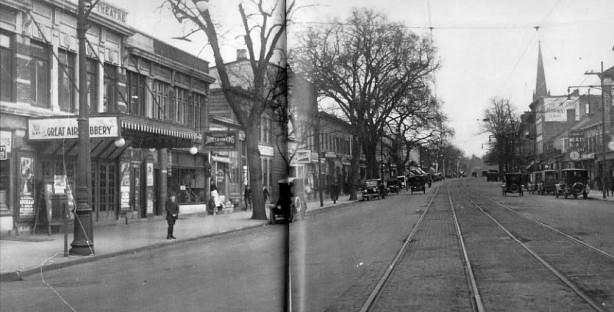
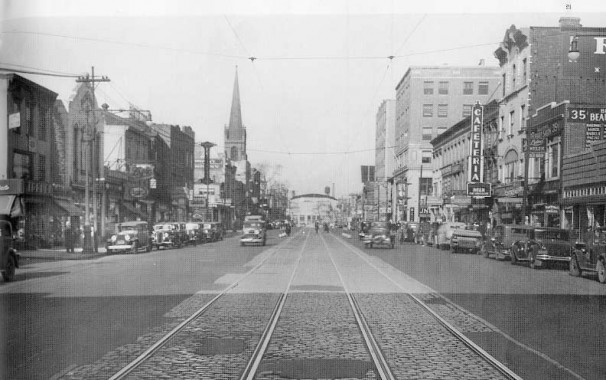

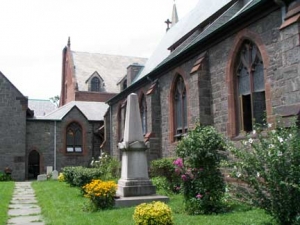
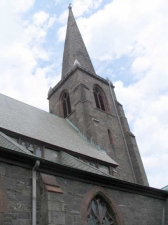
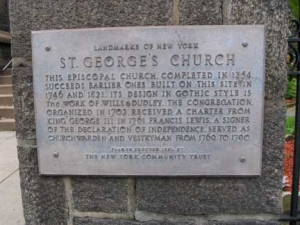

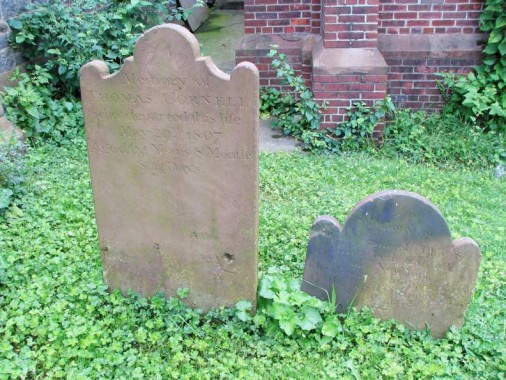

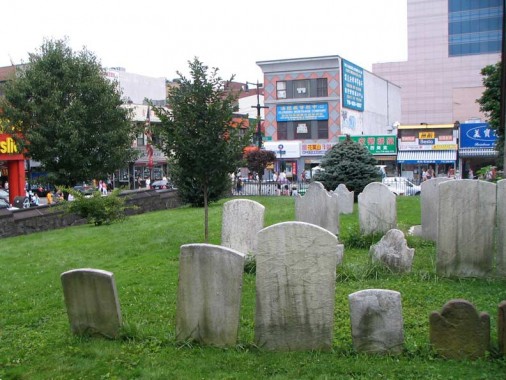



3 comments
Hello i just wanted to say these photos are amazing,i live in sunset brooklyn and its great to know the that took place in bayridge and sunset neighborhood.i recognize these photos and i can tell you put these together not so long ago.If you have the time you should look in to the history behind the Verrizano birdge and shore rd.My teacher explained to me whatwas once there before the bridge.
I grew up in Flushing…born in Flushing Hospital in 1947….I attended St Georges in he 1950’s, I remember Father Nichols and Father McKinley….. so sad the Steeple was destroyed
In 2010, my brother lived in Park Slope and taught at Queens Clg. One of his South Asian students suggested “the tornado touched down where you live & work. The gods must be angry at you for something.”